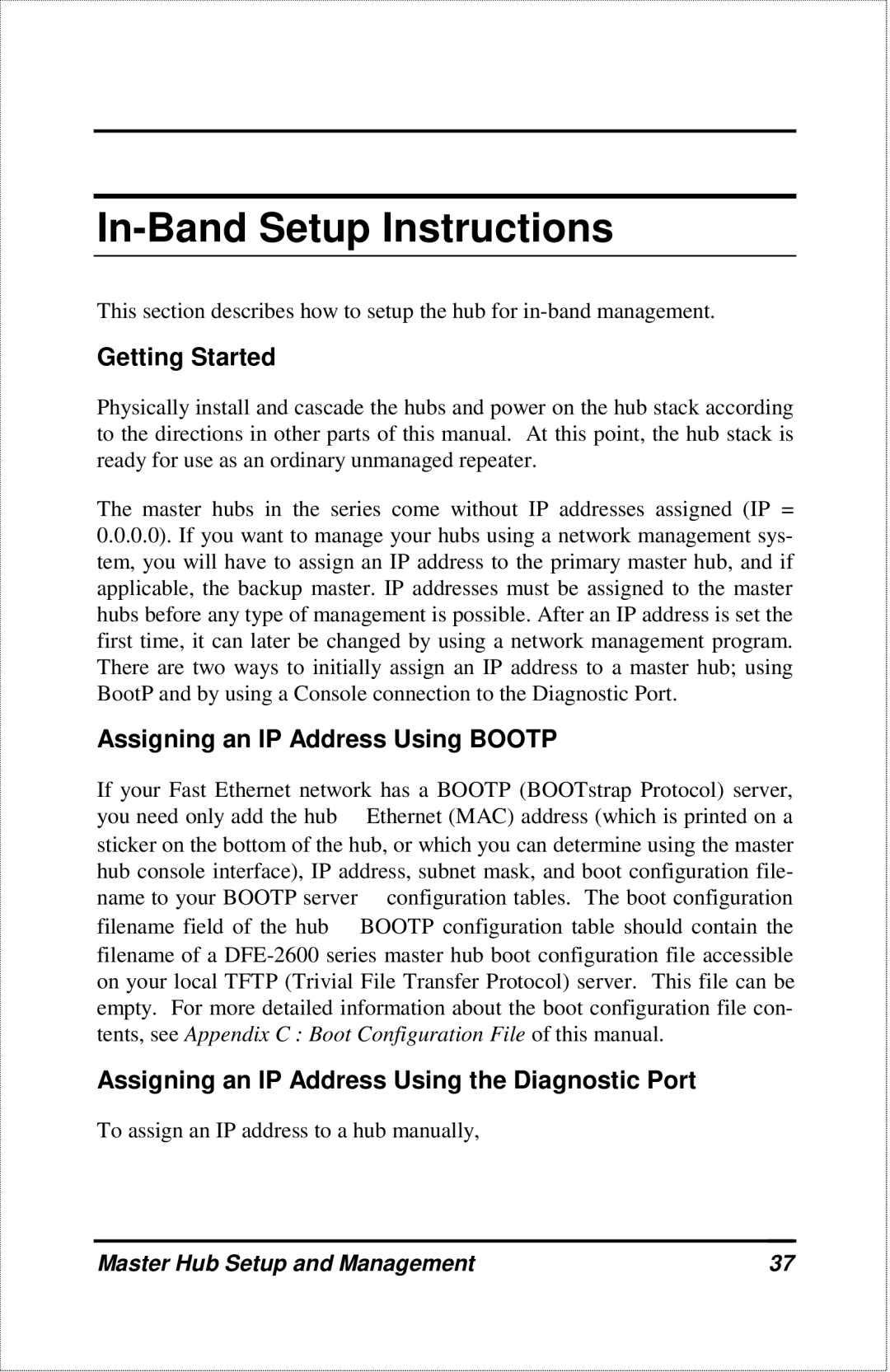
In-Band Setup Instructions
This section describes how to setup the hub for
Getting Started
Physically install and cascade the hubs and power on the hub stack according to the directions in other parts of this manual. At this point, the hub stack is ready for use as an ordinary unmanaged repeater.
The master hubs in the series come without IP addresses assigned (IP = 0.0.0.0). If you want to manage your hubs using a network management sys- tem, you will have to assign an IP address to the primary master hub, and if applicable, the backup master. IP addresses must be assigned to the master hubs before any type of management is possible. After an IP address is set the first time, it can later be changed by using a network management program. There are two ways to initially assign an IP address to a master hub; using BootP and by using a Console connection to the Diagnostic Port.
Assigning an IP Address Using BOOTP
If your Fast Ethernet network has a BOOTP (BOOTstrap Protocol) server, you need only add the hub Ethernet (MAC) address (which is printed on a sticker on the bottom of the hub, or which you can determine using the master hub console interface), IP address, subnet mask, and boot configuration file-
name to your BOOTP server | configuration tables. The boot configuration |
filename field of the hub | BOOTP configuration table should contain the |
filename of a
Assigning an IP Address Using the Diagnostic Port To assign an IP address to a hub manually,
Master Hub Setup and Management | 37 |
